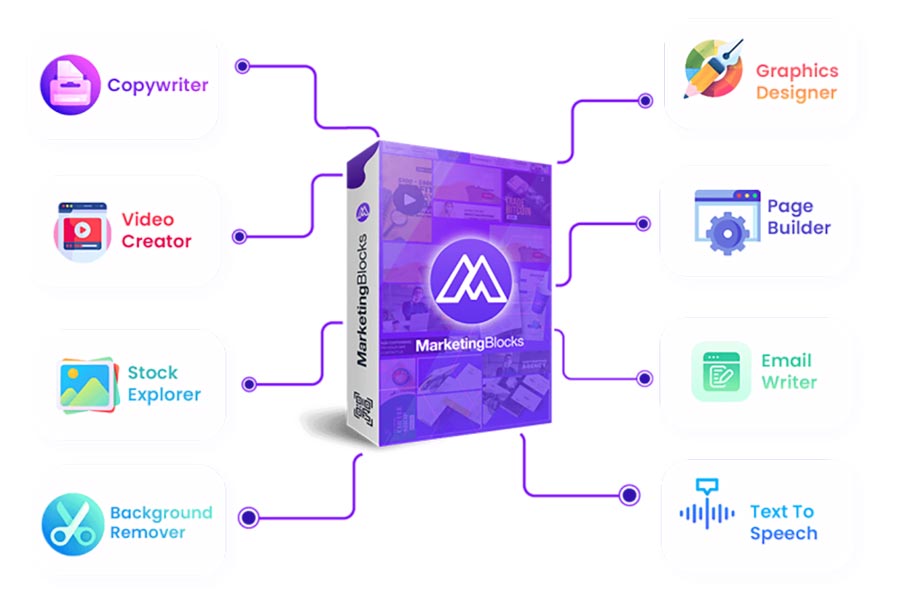Unlocking Success: Data-Driven Targeted Advertising

In the modern digital era, targeted advertising plays a vital role in helping businesses reach their desired audience with precision. Utilising data and analytics is a key factor behind the success of such strategies. By harnessing data-driven insights, businesses can pinpoint and engage the ideal audience, optimise campaigns, and boost conversion rates significantly.
This blog will explore the importance of data and analytics in targeted advertising and how businesses can harness their power to drive better results.
Understanding Targeted Advertising
Before diving into the role of data and analytics, let’s first understand what targeted advertising entails. Targeted advertising refers to tailoring ads to specific groups or individuals based on their characteristics, interests, or behaviors. It goes beyond traditional mass marketing approaches, allowing businesses to deliver personalised messages to the right people at the right time.
Targeted advertising offers several advantages over traditional mass marketing. It enables businesses to deliver highly relevant and personalised content, increasing the chances of capturing the audience’s attention and driving engagement. By understanding different customer segments’ characteristics, interests, and behaviors, businesses can create campaigns that resonate with their target audience, resulting in higher conversion rates.
Why Data and Analytics Matter
Data and analytics are pivotal in targeted advertising by providing valuable insights that guide decision-making. Here are some key reasons why data and analytics matter in this context:
Audience Segmentation and Targeting
Through data and analytics, businesses can effectively segment their audience using criteria like demographics, psychographics, and behavioural patterns. This deep understanding enables the creation of personalised, relevant campaigns that truly resonate with the target audience, leading to heightened attention, engagement, and, ultimately, improved conversions.
With data and analytics, businesses can better understand their audience’s preferences, interests, and behaviours. By segmenting the audience based on these insights, businesses can tailor their advertising messages to specific groups, ensuring the content is relevant and engaging. For example, an e-commerce business can segment its audience based on gender, age, and purchase history to deliver personalised product recommendations and offers.
Real-Time Campaign Optimisation
Data and analytics enable businesses to monitor and analyse the performance of their targeted advertising campaigns in real-time. Businesses can identify effective strategies and make necessary adjustments by tracking key metrics such as click-through rates, conversion rates, and cost per acquisition. This agility allows for continuous optimisation, ensuring campaigns deliver the best results.
Real-time campaign optimisation is crucial in today’s fast-paced digital landscape. With data and analytics, businesses can quickly identify underperforming campaigns and make data-driven decisions to optimise them. For example, businesses can tweak the messaging or creative elements to improve performance if a specific ad is not generating the desired click-through rates.
Improved Customer Insights
Data and analytics give businesses more profound insights into customers’ preferences, behaviour, and purchasing patterns. By analysing this information, businesses can better understand what motivates their target audience and tailor their advertising efforts accordingly. This helps craft more compelling ad content and facilitates the development of products and services that meet customers’ needs and desires.
Understanding customer preferences and behaviour is crucial for effective targeted advertising. By analysing data and analytics, businesses can identify patterns and trends that indicate customer preferences and interests, enabling them to create highly relevant and personalised ad campaigns. For example, a fashion retailer can analyse customer purchase history to determine popular clothing styles and create targeted ads showcasing similar products.
Cost Efficiency and ROI
By leveraging data and analytics, businesses can optimise their advertising budget by focusing on the most promising opportunities. Instead of adopting a one-size-fits-all approach, businesses can allocate their resources more efficiently by targeting specific segments more likely to convert. This targeted approach reduces wasteful spending and maximises the return on investment, resulting in better cost efficiency and higher profitability.
Data and analytics help businesses identify the most cost-effective channels, strategies, and audience segments for their advertising campaigns. Businesses can allocate their resources by understanding which channels and tactics drive the highest conversion rates and deliver the best ROI. This improves cost efficiency and allows businesses to invest in strategies that generate the highest returns.
Leveraging Data and Analytics in Targeted Advertising
Now that we understand the importance of data and analytics in targeted advertising let’s explore how businesses can effectively leverage them:
Collect and Analyse Relevant Data
Businesses need access to relevant and accurate data to harness the power of data and analytics. This involves collecting data from various sources such as website analytics, customer surveys, social media, and third-party providers. Once collected, the data must be analysed to extract actionable insights that drive advertising strategies.
Collecting relevant data is the first step in leveraging data and analytics for targeted advertising. Businesses can gather data from multiple sources, including their platforms and external sources. Website analytics can provide valuable information about user behaviour, demographics, and preferences. Customer surveys can gather insights directly from the target audience. Social media data can provide information about audience interests and engagement. Third-party providers can offer additional data sets for analysis. Businesses can uncover patterns, trends, and preferences that inform their targeting and messaging strategies by analysing this data.
Define Clear Goals and KPIs
Before launching any targeted advertising campaign, defining clear goals and key performance indicators (KPIs) is crucial. This helps align the campaign objectives with the overall business objectives and ensures that the right metrics are tracked. Whether the goal is to increase brand awareness, drive website traffic, or boost sales, having well-defined goals and KPIs provides a benchmark for success and helps evaluate campaign performance.
Defining clear goals and KPIs is essential for measuring the success of targeted advertising campaigns. Businesses should align their campaign objectives with broader business goals to ensure that advertising efforts contribute to overall growth and success. By setting specific, measurable, achievable, relevant, and time-bound (SMART) goals, businesses can track progress and evaluate the effectiveness of their campaigns. For example, a goal could be to increase website conversions by 20% within a specific timeframe. By monitoring the relevant KPIs, such as conversion rates and cost per conversion, businesses can determine if the campaign is on track to achieve the desired results.
Implement Advanced Targeting Techniques
Data and analytics enable businesses to implement advanced targeting techniques beyond basic demographic information. By utilising technologies like artificial intelligence and machine learning, businesses can identify nuanced patterns and behaviours to guide their targeting efforts. This can include targeting individuals based on browsing history, purchase behaviour, social media engagement, or even predicting future preferences.
Advanced targeting techniques allow businesses to deliver highly personalised and relevant ads to their target audience. Businesses can identify patterns and correlations that indicate specific interests, preferences, and behaviours by analysing data and using machine learning algorithms. This enables businesses to target individuals with precision, increasing the effectiveness of their advertising campaigns. For example, an e-commerce business can use predictive analytics to target customers likely to purchase based on their browsing and purchase history.
Continuously Monitor and Optimise
Targeted advertising campaigns should be continuously monitored to track their performance and identify areas for improvement. By leveraging real-time analytics, businesses can make data-driven decisions to optimise their campaigns on the go. This may involve adjusting targeting parameters, refining ad content, or reallocating budgets based on the insights gained.
Continuous monitoring and optimisation are essential for maximising the effectiveness of targeted advertising campaigns. By tracking key metrics and analysing real-time data, businesses can identify underperforming campaigns or strategies and make necessary adjustments. A/B testing can be used to compare different versions of ads or targeting parameters to determine which performs better. By continuously monitoring and optimising campaigns, businesses can ensure that their advertising efforts always deliver the best possible results.
Ensure Data Privacy and Security
While leveraging data and analytics, businesses must protect customer data privacy and security. Complying with applicable data protection regulations and implementing robust security measures builds trust with customers and mitigates the risk of data breaches or unauthorised access. Prioritising data privacy and security are essential in maintaining a strong and long-lasting relationship with customers.
Data privacy and security should be a top priority for businesses when using data and analytics for targeted advertising. Businesses should ensure proper consent mechanisms for collecting customer data and adhere to relevant data protection regulations, such as the General Data Protection Regulation (GDPR). Implementing robust security measures, such as encryption and access controls, helps protect customer data from unauthorised access or breaches. Businesses can build customer trust by prioritising data privacy and security and maintaining a positive brand reputation.
Conclusion
Targeted advertising has undergone a revolutionary shift with the integration of data and analytics. Leveraging these potent tools, businesses can now precisely target audiences, optimise campaigns on-the-fly, extract valuable insights, and attain remarkable returns on investment. To unlock their full potential, businesses must collect relevant data, set clear goals, implement advanced targeting techniques, continuously monitor and optimise campaigns, and uphold data privacy and security. By doing so, they can gain a competitive edge in today’s data-driven advertising landscape.
If you found this post engaging, don’t forget to explore our additional blogs:
- Supercharge Your Business: Mastering Cross-Channel Marketing Magic!
- Influence: The Psychology of Persuasion by Robert B. Cialdini – A Word Marketing Book Summary
- Building Trust: Brand Awareness & Reputation
- The AI Revolution: Transforming Marketing & Advertising
- Introducing Our New and Improved Dewalist Marketplace Design
- Ad Ethics: Balancing Persuasion with Responsibility
- Email Showdown: Mandrill vs Mailchimp Features
- The Future of Digital Out-of-Home (DOOH) Advertising
- Revolutionising Marketing with Virtual & Augmented Reality
- Small Business Local SEO: Unleash the Power to Boost Growth
Sign up for updates on this blog and our latest posts if you enjoyed reading this one.
Help your friends and colleagues stay informed about the newest insights on business, marketing, finance, lifestyle, and society by sharing our blog content through Facebook, Twitter, Pinterest, LinkedIn, email, or WhatsApp links below. We can create a knowledge-sharing community and empower one another to accomplish and experience our objectives.
FAQ
What is targeted advertising?
Targeted advertising involves customising ads for specific groups or individuals, considering their characteristics, interests, or behaviours. This approach empowers businesses to deliver personalised messages to the perfect audience precisely when it matters most.
Why is data and analytics necessary in targeted advertising?
Data and analytics provide valuable insights that guide decision-making in targeted advertising. They enable businesses to segment their audience, optimise campaigns in real-time, gain customer insights, and achieve cost efficiency and higher profitability.
How can businesses leverage data and analytics in targeted advertising?
Businesses can effectively leverage data and analytics in targeted advertising by collecting and analysing relevant data, defining clear goals and KPIs, implementing advanced targeting techniques, continuously monitoring and optimising campaigns, and ensuring data privacy and security.
How does targeted advertising benefit businesses?
Targeted advertising offers several advantages to businesses, including delivering highly relevant and personalised content, increasing audience engagement and conversion rates, optimising advertising budgets, and maximising return on investment.
Credits
Featured photo by Mikael Blomkvist on Pexels.









